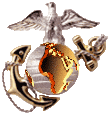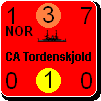marcbarker
Posts: 1213
Joined: 7/6/2008
Status: offline

|
prime example of river support. Look at the Batlle of Sabine Pass in Texas. The Union was comming dow the river in Force. Afew CSA guns stopped it cold. The only time in CSA history Medals of Honor so to speak were given out to those individuals.
The Second Battle of Sabine Pass took place on September 8, 1863, and was the result of a Union expedition into Confederate-controlled Texas during the American Civil War. It has often been credited as the most one-sided Confederate victory during the conflict.
During the summer of 1863, the president of Mexico, Benito Juárez, was overthrown and replaced by the emperor Maximilian, whose allegiance was with France. France had been openly sympathetic to the Confederate States of America earlier in the war, but had never matched its sympathy with diplomatic action. Now that a French government existed just south of the Rio Grande, the Confederates hoped to establish a fruitful route of entry for much-needed matériel.
U.S. President Abraham Lincoln was well aware of Confederate intentions and sent an expedition into Texas to establish a military presence and to discourage Maximilian from opening trade with the Confederacy. The Federal force was under the command of Major General Nathaniel P. Banks, a political general with little discernible command ability. Banks's original intent was to lead a combined army-navy expedition from the Mississippi River into the Red River. However, low water in the Red River prevented the Union gunboats from entering it. As a consequence, the expedition entered the Sabine River from the Gulf of Mexico. Banks ordered his subordinate, Major General William B. Franklin, to defeat a small Confederate detachment at Fort Griffin near the mouth of the river and capture Sabine City. The detachment consisted of 46 infantrymen of the 1st Texas Heavy Artillery and six guns manned by the Jeff Davis Guards — all under the command of Lieutenant Richard "Dick" Dowling. Considering the prominent size of the Union expeditionary force, disposing of this fort was not expected to prove any great challenge.
On the day of the battle, U.S. Navy Lieutenant Frederick Crocker entered the Sabine River with four gunboats, accompanied by eighteen troop transports containing 5,000 Federal infantrymen. Dowling's Texans had previously placed stakes in the river to act as markers for cannon fire. As the Union convoy entered among the stakes, the Confederates opened fire with deadly accuracy and wrought havoc on the vessels. The Yankees were forced to withdraw down the river after having lost two gunboats and 200 sailors captured. The Confederates are believed not to have suffered any casualties.
The Battle of Sabine Pass was of little tactical or strategic significance. A Confederate supply line from Mexico to Texas was never established, and in any case it could not have effectively supplied the states east of the Mississippi once the Union controlled the whole of that river after its victory at Vicksburg in July. The Confederacy was therefore forced to continue its reliance on blockade running to import valuable materiel and resources.
|
 Printable Version
Printable Version
 With this great game-engine, there must come some more games - maybe a WW2 game
With this great game-engine, there must come some more games - maybe a WW2 game ? Does anyone know if West-civ is working on a new game? I mean FOF is some years old now.
? Does anyone know if West-civ is working on a new game? I mean FOF is some years old now.












 New Messages
New Messages No New Messages
No New Messages Hot Topic w/ New Messages
Hot Topic w/ New Messages Hot Topic w/o New Messages
Hot Topic w/o New Messages Locked w/ New Messages
Locked w/ New Messages Locked w/o New Messages
Locked w/o New Messages Post New Thread
Post New Thread